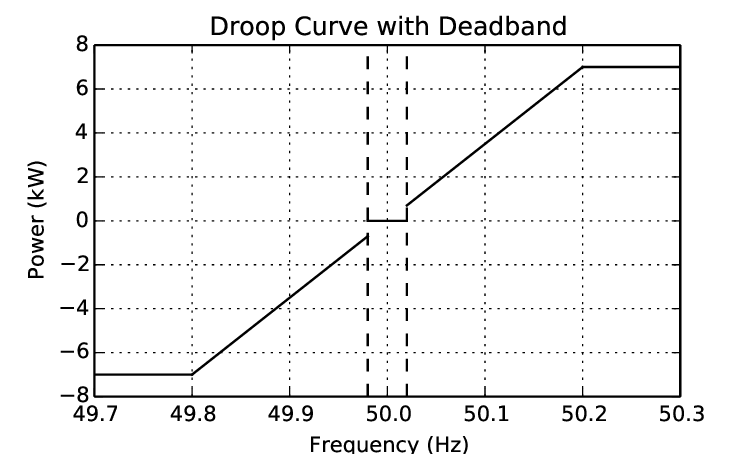FCR
See Also: https://wiki.eniris.be/wiki/publicinformation/view/Smartgrid%20One/Begrippen/FCR/
FCR stands for Frequency Containment Reserve, which means that the system responds to frequency fluctuations in the electricity grid.
FCR is intended to respond to slow changes in the frequency of the network caused, for example, by the start-up or shutdown of large power plants. FCR is used to keep the frequency within a certain bandwidth and prevent it from the nominal value of 50 Hz in Europe. For FCR, you need to deliver power within 2 seconds and deliver full power within 30 seconds for approximately 15 minutes.
- The minimum size is 1 MW
- The system must be able to deliver electricity for a full delivery time of 30 seconds
- A dead band of +/- 10 MHz will have to be applied
- The standard frequency rate of +/- 200 MHz must be supported
- There is a 15-minute requirement, meaning the system must assist within a 15-minute window
- Full capacity for FCR must be reached again after two hours
There are several methods to implement an FCR curve.
1) Via the Droop Function
The droop function is a method of controlling the system's response to frequency changes. It is typically a feature of energy management systems, such as battery storage, where it monitors the battery's response to frequency deviations in the grid. This helps stabilize the grid by maintaining the balance between electricity supply and demand.

ELIA:
The active power measurement (DPmeasured) for individual assets belonging to a virtual delivery point is transmitted to the Real-Time Communication Platform every 2 seconds. In case the active power measurement remains constant, a refresh value needs to be sent every 5 minutes.